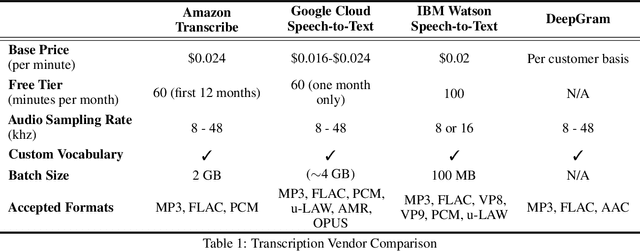Ryan Sharp
SMILe: Leveraging Submodular Mutual Information For Robust Few-Shot Object Detection
Jul 02, 2024Abstract:Confusion and forgetting of object classes have been challenges of prime interest in Few-Shot Object Detection (FSOD). To overcome these pitfalls in metric learning based FSOD techniques, we introduce a novel Submodular Mutual Information Learning (SMILe) framework which adopts combinatorial mutual information functions to enforce the creation of tighter and discriminative feature clusters in FSOD. Our proposed approach generalizes to several existing approaches in FSOD, agnostic of the backbone architecture demonstrating elevated performance gains. A paradigm shift from instance based objective functions to combinatorial objectives in SMILe naturally preserves the diversity within an object class resulting in reduced forgetting when subjected to few training examples. Furthermore, the application of mutual information between the already learnt (base) and newly added (novel) objects ensures sufficient separation between base and novel classes, minimizing the effect of class confusion. Experiments on popular FSOD benchmarks, PASCAL-VOC and MS-COCO show that our approach generalizes to State-of-the-Art (SoTA) approaches improving their novel class performance by up to 5.7% (3.3 mAP points) and 5.4% (2.6 mAP points) on the 10-shot setting of VOC (split 3) and 30-shot setting of COCO datasets respectively. Our experiments also demonstrate better retention of base class performance and up to 2x faster convergence over existing approaches agnostic of the underlying architecture.
A Survey of Task-Based Machine Learning Content Extraction Services for VIDINT
Jul 09, 2022



Abstract:This paper provides a comparison of current video content extraction tools with a focus on comparing commercial task-based machine learning services. Video intelligence (VIDINT) data has become a critical intelligence source in the past decade. The need for AI-based analytics and automation tools to extract and structure content from video has quickly become a priority for organizations needing to search, analyze and exploit video at scale. With rapid growth in machine learning technology, the maturity of machine transcription, machine translation, topic tagging, and object recognition tasks are improving at an exponential rate, breaking performance records in speed and accuracy as new applications evolve. Each section of this paper reviews and compares products, software resources and video analytics capabilities based on tasks relevant to extracting information from video with machine learning techniques.
 Add to Chrome
Add to Chrome Add to Firefox
Add to Firefox Add to Edge
Add to Edge